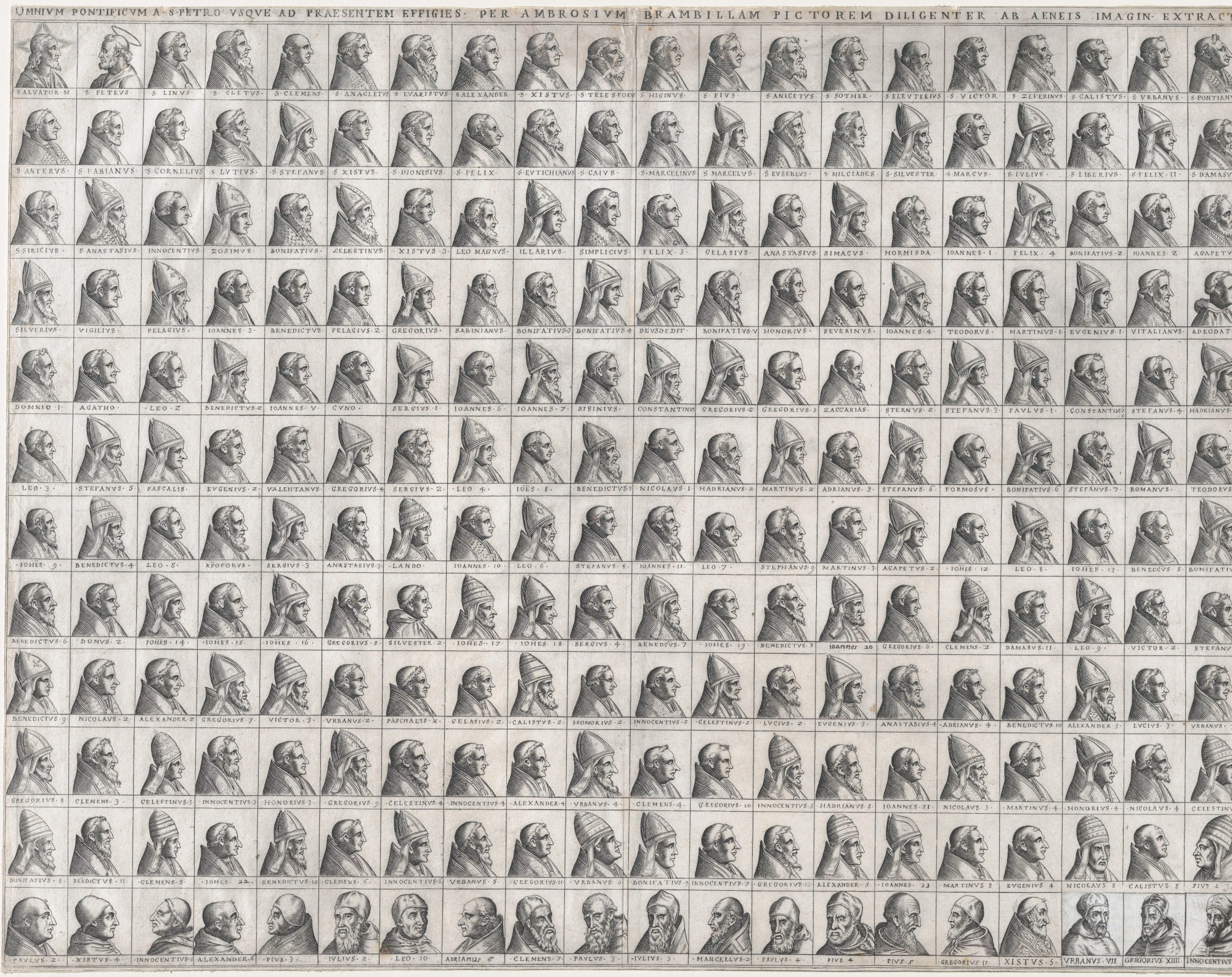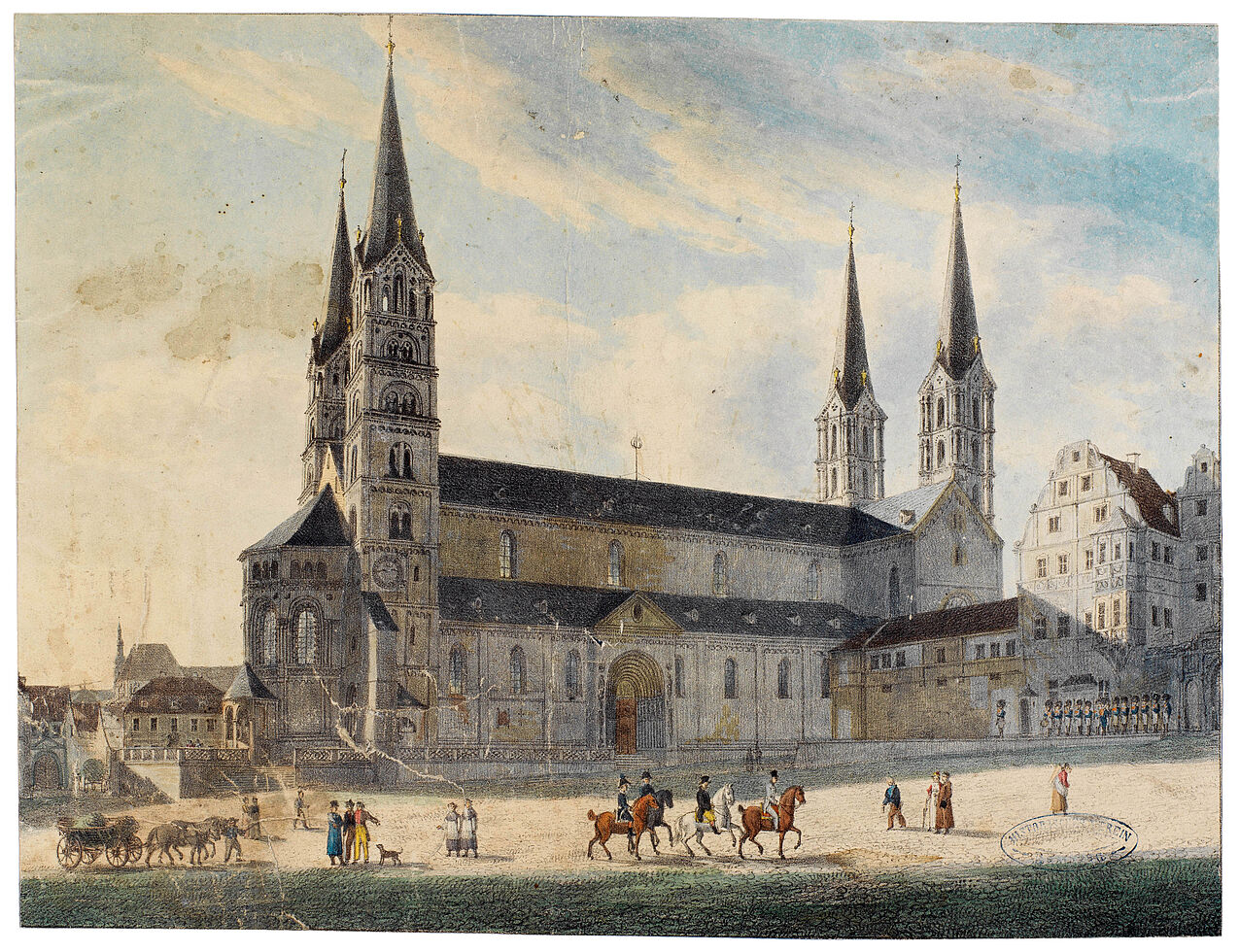Conservative estimates assume that towards the end of the early modern period, more than a tenth of the population of the Holy Roman Empire lived in ecclesiastical states.1See Christophe Duhamelle, L‘Héritage Collectif. La Noblesse d‘Église rhénane, 17e-18e Siècles, Paris 1998, p. 29. Other estimations are even higher, see Egon Johannes Greipl, Zur weltlichen Herrschaft der Fürstbischöfe in der Zeit vom Westfälischen Frieden bis zur Säkularisation, in: Römische Quartalschrift 83 (1988), pp. 252-264, here pp. 252-53; Bettina Braun, Die geistlichen Fürsten im Rahmen der Reichsverfassung 1648-1803. Zum Stand der Forschung, in: Wolfgang Wüst (ed.), Geistliche Staaten in Oberdeutschland im Rahmen der Reichsverfassung. Kultur, Verfassung, Wirtschaft, Gesellschaft, Epfendorf 2002, pp. 25-52, here p. 26. In Franconia, the proportion was even higher.2Peter Claus Hartmann, Der Bayerische Reichskreis (1500 bis 1803). Strukturen, Geschichte und Bedeutung im Rahmen der Kreisverfassung und der allgemeinen institutionellen Entwicklung des Heiligen Römischen Reiches, Berlin 1997, p. 76. Almost half of the inhabitants of the Franconian Imperial District belonged to an ecclesiastical dominion, i.e. were ruled by prince-bishops or abbots. While their functions in the Germania Sacra can already be considered well researched, less is known about their co-rulers, the cathedral chapters. The Bamberg DFG project “Governance, transition management and memory of an ecclesiastical corporation. Scriptuality of the Bamberg cathedral chapter” has therefore dedicated itself to this corporation – starting with the sessions that formed the centre of the chapter’s decision making. For the project, they were collated in a database by Alissa L’Abbé and Oliver Kruk.
What the Cathedral Chapter was
The Bamberg Cathedral Chapter was a corporation of 34 clerics, all of whom came from the nobility, mostly from the (imperial) knighthood. The group was divided into (essentially) two classes: 20 canons with full rights had a seat in the choir, received a full income and were allowed to vote at chapter meetings as well as in bishop elections. The up to 14 “junior canons” (domicellaries) did not yet have full rights, but had a candidate status. When a canon left due to death or resignation, they could take over his vacant seat. Who succeeded to the cathedral chapter was decided by the other canons in a rotation system.
The duties of the cathedral chapter could change slightly from time to time, but consisted of three core elements (over and above the canons’ spiritual duties): Firstly, the cathedral chapters are best known for their function as the electoral body of the prince-bishops. When a bishop died, they took over the government of the prince-bishopric during the vacancy, prepared the next episcopal election and ultimately decided who the next bishop would be. The prince-bishops of the early modern period therefore all originated from the corporation itself. After the election, the chapter swore the elected bishop to a collection of rights and duties, the so-called electoral capitulation. In this way, secondly, the cathedral chapter gained some central rights in the government of the prince-bishopric as early as the Middle Ages. For example, the prince-bishop was not allowed to levy taxes, pass laws or appoint officials without the consent of the cathedral chapter. Thirdly, the cathedral chapter was a largely independent sovereign in parts of the prince-bishopric, for example in Staffelstein and (until the 18th century) in parts of Bamberg, the so-called immunities. Here it could levy its own taxes, issue mandates and dispense justice itself. In addition, it had its own property from which it generated income.3For basic insights, see Oliver Kruk, “Nit on meines Capitels Wissen”. Praktiken des Informations- und Wissensmanagements in der Verwaltung und Herrschaft des Bamberger Domkapitels, 1522–1623, Baden-Baden 2024, pp. 49-90. See also Dieter J. Weiss, Fürstbischof und Domkapitel zur Schönbornzeit. Geteilte Herrschaft im Hochstift Bamberg?, in: Johannes Erichsen, Katharina Heinemann, Katrin Janis (eds.), KaiserRäume – KaiserTräume. Forschen und Restaurieren in der Bamberger Residenz, München 2007, pp. 21-27; Christoph Mann, Das Bamberger Domkapitel im späten 18. Jahrhundert. Lebensstile, Parteiungen, Reformfähigkeit, in: Mark Häberlein, Kerstin Kech, Johannes Staudenmaier (eds.), Bamberg in der Frühen Neuzeit. Neue Beiträge zur Geschichte von Stadt und Hochstift, Bamberg 2008, pp. 319-346; Ansgar Frenken, Bamberg, Domkapitel, 2010, http://www.historisches-lexikonbayerns. de/Lexikon/Bamberg,_Domkapitel (18. November 2022).
Decision-making in the Cathedral Chapter
At its sessions, the cathedral chapter made joint decisions on the issues of territorial rule and the co-government of the prince-bishopric as outlined above, as well as on matters of finance and property management. These meetings were initially held on two fixed sessions days per week (Tuesdays and Fridays). In the 18th century, however, meetings tended to be convened as required. In addition to the ordinary and extraordinary meetings, the dean, as chairman of the cathedral chapter, could also convene peremptorial sessions. At these sessions, the chapter discussed particularly important issues. Usually, all sessions took place in the chapter’s house next to the Bamberg cathedral. Only in times of war, and, later in the 18th century, for informal discussions, the canons met outside the usual framework to be able to continue consulting.
Ordinary sessions were generally only sparsely attended. This was related to the fact that most canons were prebended in several cathedral chapters and thus were absent. Moreover, they carried out tasks in the government of the prince-bishopric, e.g. in diplomatic missions. Therefore, only six out of 20 canons attended the ordinary sessions on average. For the peremptorial sessions, this number is way higher.
The canons present made decisions collectively. As there was a flat hierarchy within the chapter without a strong enforcement authority, the canons could either come to an amicable agreement or hold a vote. Especially in the 16th century, the canons endeavoured to reach a joint decision. This decision was seen as especially binding and produced strong legitimacy. Thus, the protocolls hide signs of political debate and contradiction. This changed over time: In 18th century, open discussions and combative voting took place far more often. We even find voting lists in the corresponding minute books, providing information about voting behaviour and conflict within the chapter. This difference indicates changed patterns of decision-making, but also new perceptions of honor.
The Minute Books as Historical Source
Since the chapter’s decisions were legally binding, they have been written down in the so-called “Rezessbücher” (minute books), starting in the mid-15th century. The entries are sorted by date and held in German language from their start. While they tend to be very short early in the 16th century (most decision are recorded in just one or two sentences), they become more detailed over time. As early as 1600, individual entries sometimes took up several pages of space. They include not just the decision itself, but also additional material, such as reports from officials, incoming letters or counselling content, providing further information on the corresponding topics. Since 1566, attendance lists have been added to the minute books.
Concerning written records, the cathedral chapter was far ahead of the prince-bishop in Bamberg: A continuous and serial tradition in his administration only began in the late 17th century. This is why the cathedral chapter’s minute books are the most important records of the prince-bishopric for the 16th and 17th centuries. Even beyond that time, they depict large parts of the chapter’s activities and, thus, contain details about several aspects of early modern society as well as the prince-bishoprics governmental, religious, administration and cultural history.
By making the minute books (and, by that, the sessions) of the cathedral chapter available, our data can help to access these sources from different perspectives and concerning various research questions and topics. The data thus is not just relevant for regional historians of Franconia or research topics related to the prince-bishoprics and the Imperial Church. Instead, it can be used for research on corporate decision-making, on the knighthood, on poverty, crafts and food supply, as well as on administration, reformation, military and university history – to name just a few use cases.
What’s the Data?
The data collected focusses primarily on the sessions of the Bamberg Cathedral Chapter. It includes more than 1500 sessions between 1505 and 1803, their dates, their form (i.e. if one session is ordinary, extraordinary or a peremptorial session), their attendance lists, as well as short summaries of the discussed subjects. In order to be able to find specific sessions, we have also recorded references to places (P434), persons (P33) and topics (P256), which can be queried via the Query Service. Moreover, the inventory position and a link to the corresponding online digitisation make the original sources easily accessible.
By that, users can easily find and visualise references – e.g. to places mentioned in the minute books. A map depicting these references shows the geographical focus of the chapter in the Franconian area, while indicating supra-regional references to other princely courts, dioceses, universities or the papal state.
When looking for certain topics, users can browse a list of keywords linked to one or multiple sessions of the cathedral chapter. The variety of topics indicates the broad range of contents contained in the minute books.
Going on from a special keyword, users can generate queries that help to navigate to the relevant information. For example, they can create lists that itemise sessions to certain topics. In the following, one can find sessions in which the episcopal elections have been discussed (as a timeline).
What’s missing?
Over 300 years of administrative activity and more than 120 volumes of books are a life’s work. However, since we could not devote our entire lives to it, the data remains incomplete so far. Since we worked on the period from 1522 to 1623, on the one hand, and the second half of the 18th century on the other, the period in between remains almost completely unilluminated. We also had to make a selection for the time periods of our PhD-projects. On the one hand, the selection of sessions involved cross-sections, i.e. individual years or time periods that were chosen more or less at random in order to gain a representative insight into the administrative and governmental activities of the cathedral chapter. In addition, we have analysed individual sessions in more detail, which have been thematically integrated into our PhD-projects. This is why the timeline of sessions included in our data set looks somewhat full of holes.
That said, the timeline not only shows what we were unable to compile, but also what other researchers can still explore. The sources are available online, and we are looking forward to what is yet to come.

